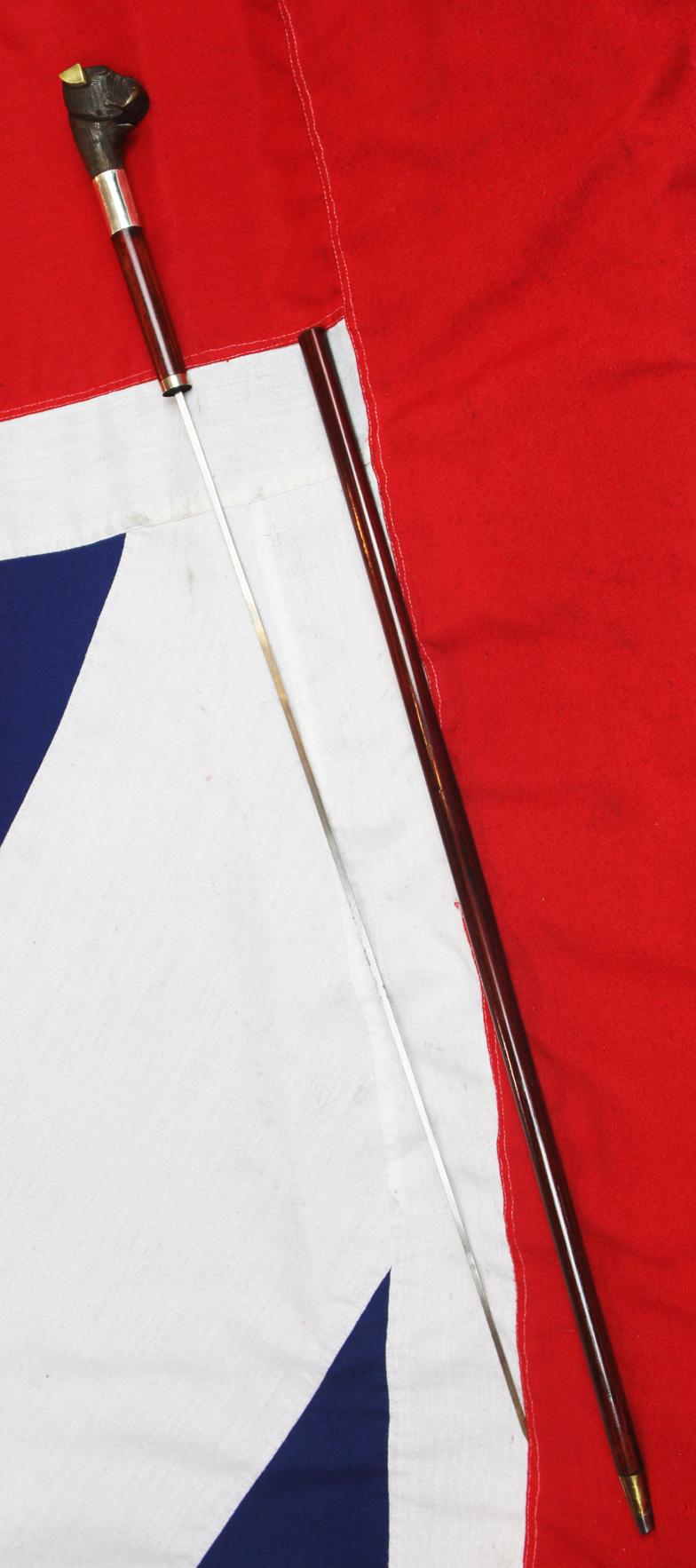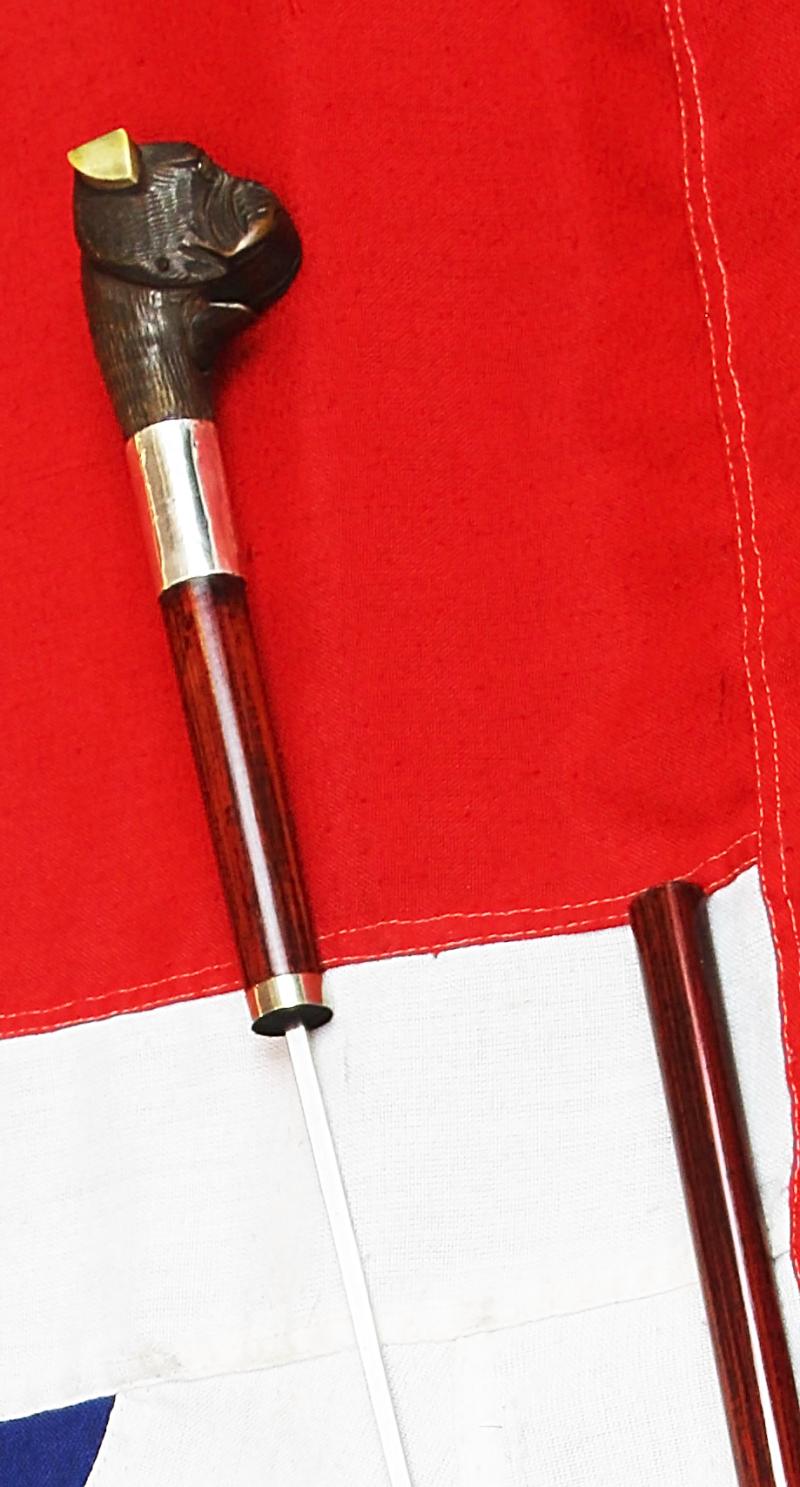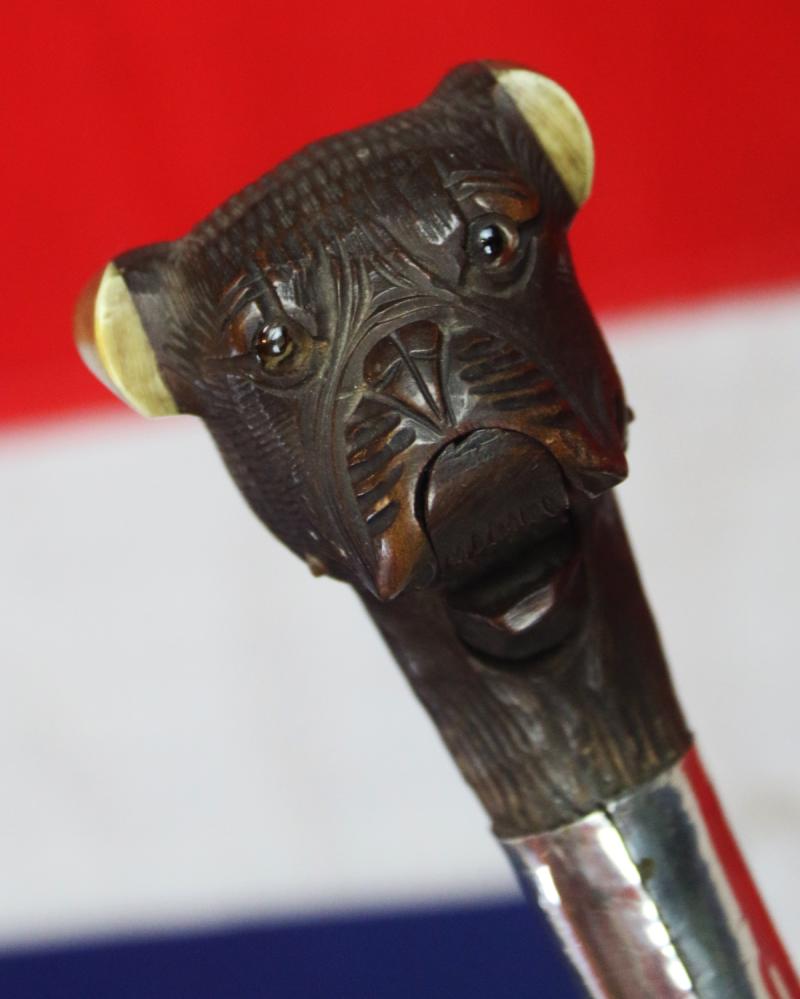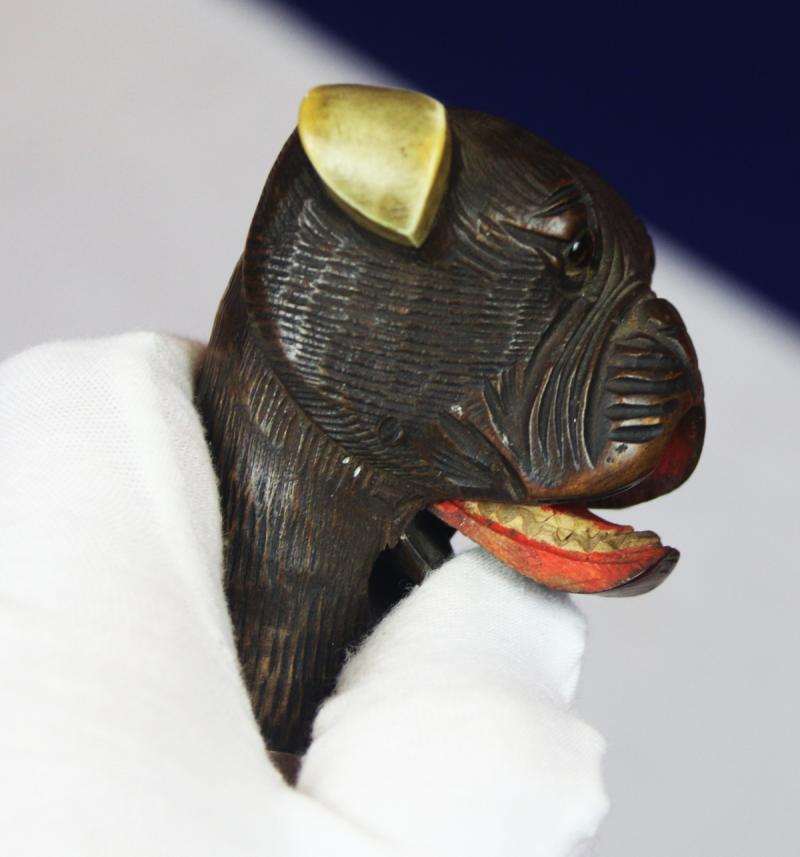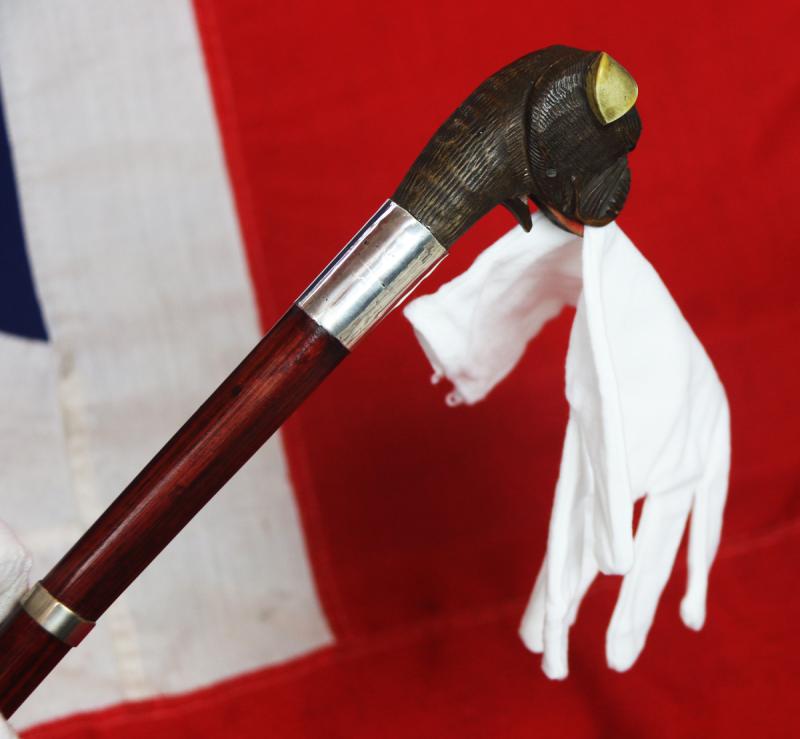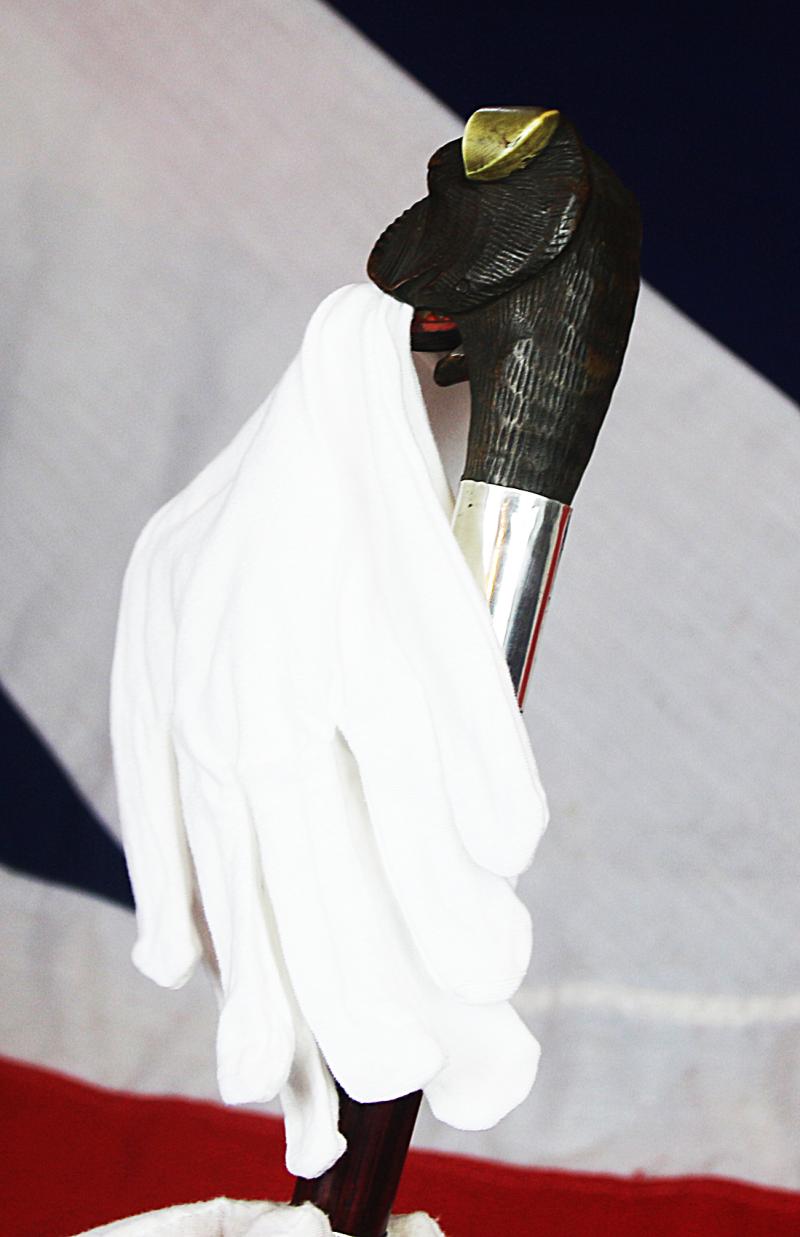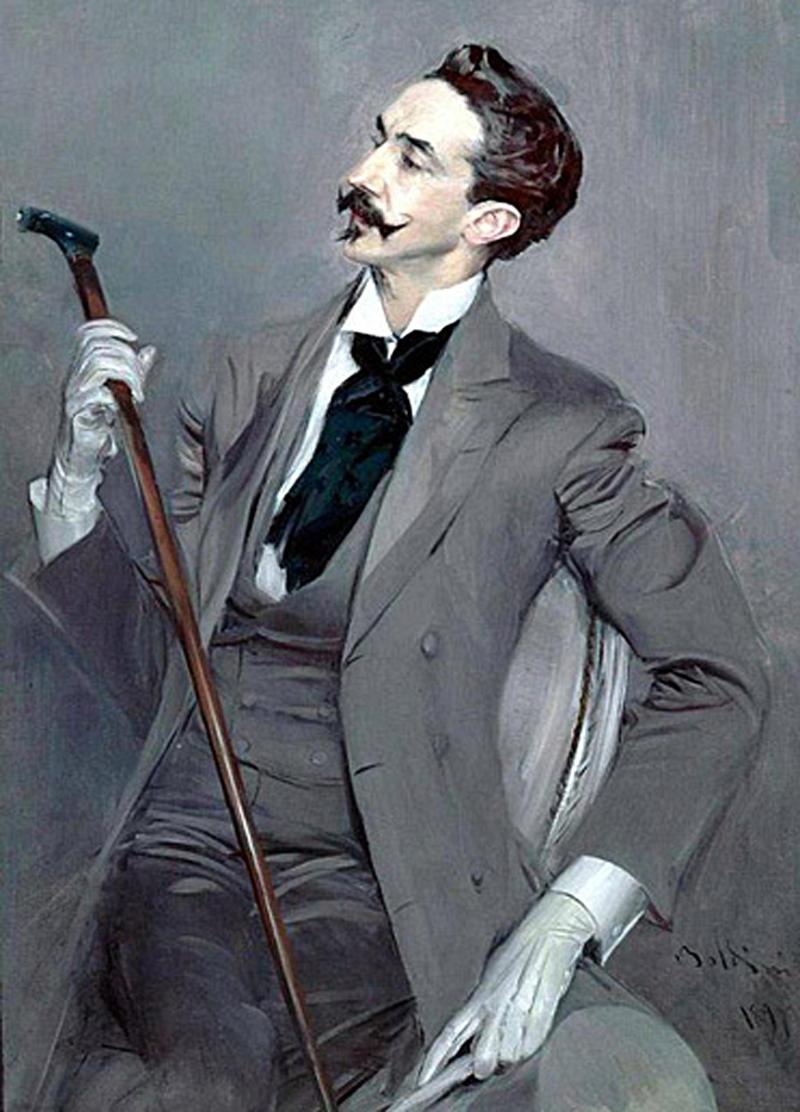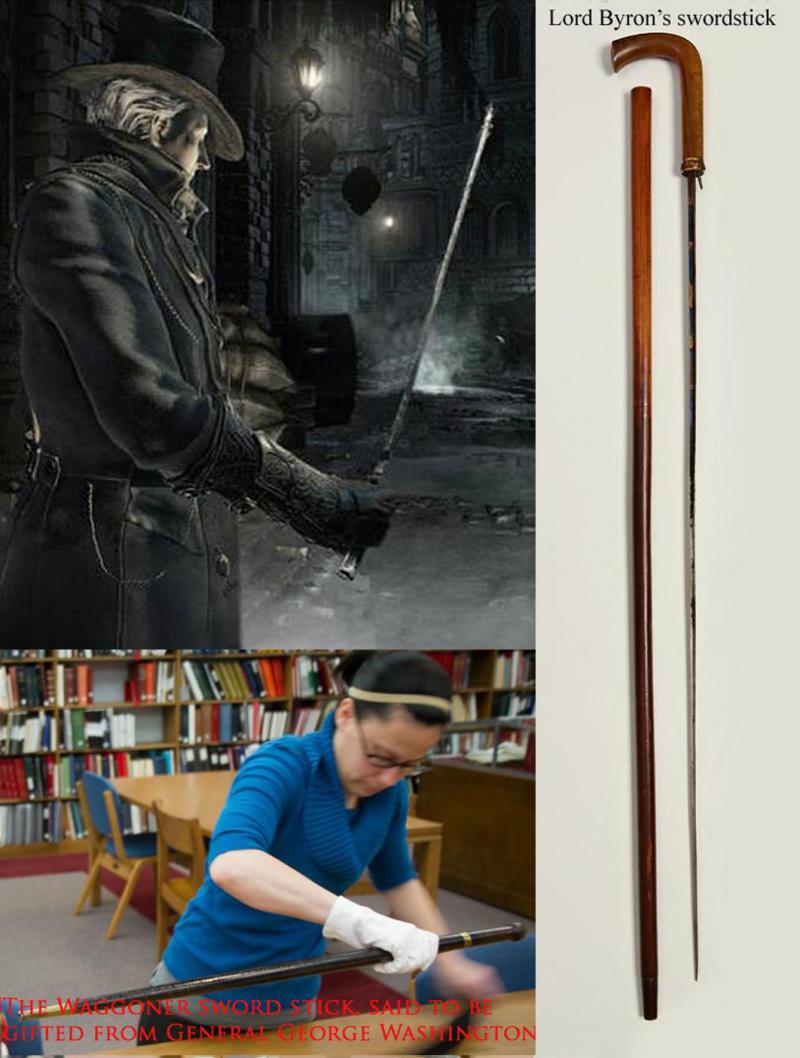A Superb, Wonderful, & Highly Amusing, Antique Edwardian, Carved Automata Bulldog's Head Gadget Cane. That Is Not Only A 'Glove Holder' Handled Walking Stick, But A Superbly Secretly Concealed Sword-Stick
Superbly carved wooden bulldog's head, that has a finger trigger operated opening & closing jaw, that is spring tensioned, and upon release of the trigger it can grip a pair of gentleman's gloves. The head is superbly hand carved wood with glass eyes, carved horn ears. Inside the bulldog's mouth, the jaw is painted red and each individual tooth painted white.
The wooden haft is beautiful dark red, with black striping decoration, to simulate rosewood, and the stick contains a secret, a superbly hidden, long, quatrefoil {four sided} long sword blade. Hallmarked London silver ferrule dated 1906,
Gadget or system canes by inventive spirits are perhaps the most fascinating and most collected canes. These quirky creations feature hidden devices such as a fan, an umbrella, a bottle and drinking glass, a perfume bottle or a sword.
Sometimes also scalpels and syringes in canes for
doctors. Also, musical instruments, fishing rods, telescopes, sewing kits and corkscrews can be
hidden in the head of a cane. More than 1500 patents were applied for during the 18th and 19th
centuries. The two essential properties of the gadget cane are something hidden and a combination
of several tools or functions. In addition to the official term gadget cane, there are also the more
romantic expressions such as canes with inner life or canes with soul.
Findings from the tomb of Tutankhamun, as well as medieval bishopric staffs, prove that specially
shaped or ornate sceptres have served as symbols of power since time immemorial. But it was Louis XIII who brought the cane to importance as a royal accessory. The king, as his portraits depict, supposedly always held one in his hands. He also gave them – along with valuable snuffboxes – as gifts of honour. Accordingly, gentlemen who wanted to be fashionable never went without this accessory from that time on. At the time, these were sort of ornate rods without a curved handle that were held in the hand or carried under the arm.
The 19th century and the beginning of the 20th century became the age of the cane. The tremendous popularity then created the desire to be seen with a cane. And so a wealth of unique
pieces with practical and strange handles and a mysterious inner life were created. The painter
Henri de Toulouse-Lautrec, for example, owned a cane containing a bottle that held a pint of absinthe.
In the mid-18th century Saxony's prime minister, Heinrich Graf von Brühl, possessed 300 sticks to go with 300 suits, together with just as many snuffboxes which he weared in turn. King Friedrich II, too, had a huge collection of luxurious walking sticks and snuffboxes. After the Seven-Years War one particular type of sticks with a handle formed like a rope, which was King Friedrich’s constant companion, became so popular, that it was dubbed the "Fritz crutch".
Also at the end of the 19th century the "gadget cane" with additional functions was discovered. Sometimes elegant, sometimes plain, but curious and unrecognisable from the exterior, and the most varied objects and gadgets were concealed in the handle or shaft - out of expediency, or just for fun, or because the owner of the stick wanted to hide something from the general public, such as a hidden sword blade. In fact this one is especially ingenious in that it has two diversely separate functions, the main, the carved bulldog's head glove holder would amuse and thoroughly entertain, but its second secret would never even be guessed at, for gadget canes never usually have another hidden side, that would turn it from a fabulous curiosity into a defender of life in times of severe threat. One could easily imagine Dr Watson's ejaculation, " My Lord Holmes, that cane is simply ingenious! "
There was no limit to the genius of the inventors. There have been canes assigned to a certain profession: like one to the locksmiths to the doctor or one to the horse trader. With this can the height of a horse could have been measured. This explains the existence and meaning of the word “Stockmaß”.
Catherine Dike described 1600 different systems and functionings of canes in her book “Cane Curiosa”. She presents a great variety which reaches from useful canes to witty ones. On the same time have been automatic sticks invented. The handle were formed as a human or an animal head made of ivory or wood. When you press a knob they turn her eyes or her ears and they open their mouth.
The first sword canes were made for nobility by leading sword cutlers. Sixteenth century sword canes were often bequeathed in wills. Sword canes became more popular as the streets became less safe. Society dictated it mandatory that gentlemen of the 18th and especially 19th centuries would wear a cane when out and about, and it was common for the well-dressed gentleman to own and sport canes in a variety of styles, including a good and sound sword cane. Although Byron was proficient in the use of pistols, his lameness and his need to defend himself in some potentially dangerous situations made a swordstick doubly useful to him. He received lessons in London from the fencing master Henry Angelo and owned a number of swordsticks, some of which were supplied by his boxing instructor Gentleman John Jackson.
Sword sticks came in all qualities, and for numerous purposes, from the simplest bamboo sword cane personal defender to stout customs officer’s ‘prod’, to offensive close quarter stiletto dagger canes and even to the other side of the world in the form of Japanese samurai’s shikome-sue, hidden swords.
We show two famous sword sticks in the gallery, one that belonged to Lord Byron, and another in a Presidential Centre Library collection, a historic sword stick is part of the Rutherford B. Hayes Presidential Centre Library collection in Fremont, Ohio from the Waggoner family, the sword-cane was said to have been presented to Mr Waggoner by General George Washington in honour of Waggoner's service in Washington's Life Guard during the American Revolutionary War.
An original antique collectors item for display purposes only.
36 inches long overall, blade 26.25 inches.
Code: 25259
2150.00 GBP


